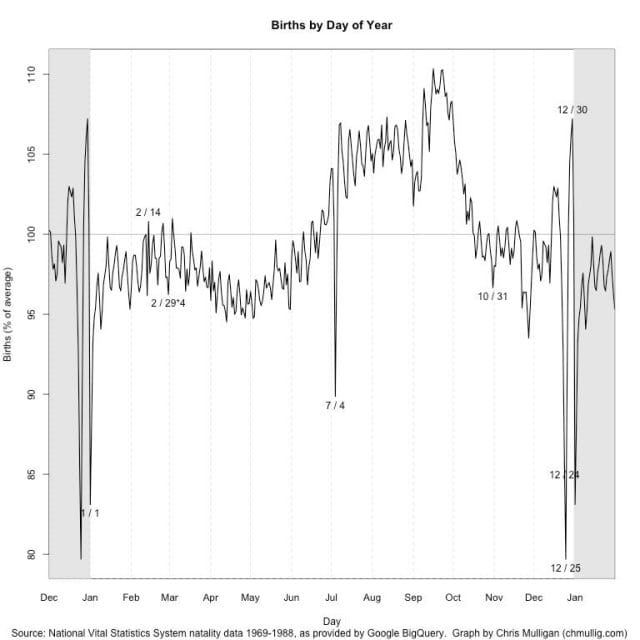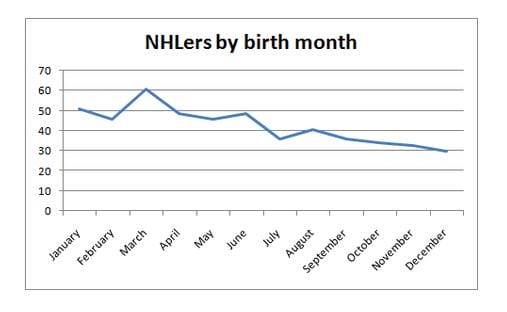
Source: Chris Mulligan
An analysis of data from the National Vital Statistics System shows that a disproportionately high percentage of births take place in September. After birth rates bottom out around April and May, they gradually rise before hitting a peak in mid-September.
High school biology taught us that pregnancies last for about 9 months, if not a little bit longer. So if we do the math, looks like the holiday season is also the season for love. A baby born between late-August and late-September was probably conceived sometime between Thanksgiving and New Year’s Eve.
For parents looking for an academic juggernaut, September birthdays are a good thing. A study by the Institute of Fiscal Studies found that children in England born in autumn generally outperformed their peers in the classroom. Conversely, summer babies struggled to keep up with their classmates. A simple explanation for this is that the common cut-off birth date for each grade is September 1. Students born in July and August are consistently the youngest in their classes.
However, if you want your kid to be the next Wayne Gretzky, the winning strategy may be to shoot for a March birth date:

Source: CBC
In Outliers, Malcolm Gladwell noted that a significant proportion of professional hockey players were born between January and March. Steve Levitt and Steve Dubner found the same trend among European professional soccer players. Cut-off birth dates in hockey and soccer youth leagues are often January 1. Which means that, just like in the classroom, kids with certain birth dates are more likely to succeed due to being older and more developed.
To get occasional notifications when we write blog posts, sign up for our email list.



